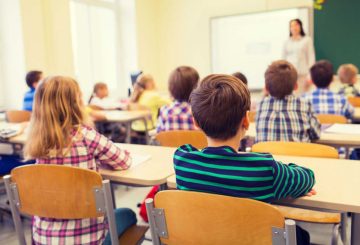Ang mga mag-aaral sa paaralan mula sa buong bansa ay nagsimula sa mga matatanda sa pamamagitan ng pakikilahok sa isang mock na halalan. Humigit-kumulang 115,000 mag-aaral mula sa 775 paaralan ang nagbigay ng kanilang mga boto para sa mga partido at mga lokal na kandidato ng elektoral na sumasalamin sa aktwal na pangkalahatang halalan. Pinadali ng Electoral Commission ang inisyatibo sa pamamagitan ng pagbibigay ng mga paaralan ng kagamitan sa pagboto
Ang mock election ni Remuera Intermediate School ay nakita si Sameer na namamahala sa pila ng mga mag-aaral sa pagboto, na naglalarawan ng proseso bilang prangka. Si Norah, bahagi ng koponan ng publisidad ng paaralan, ay nagsiwalat ng halo-halong opinyon kung dapat pahintulutan ang mga tinedyer na bumoto. Habang ang ilan ay naniniwala na ang mga tinedyer ay walang ganap na pag-unawa sa proseso ng elektoral, nararamdaman ng iba na dapat silang may karapatan na bumoto. Si Maelee, isa pang mag-aaral, ay nagpahayag ng sigasig tungkol sa pagboto nang siya ay naging 18 at binigyang diin ang kahalagahan ng higit na pakikilahok sa pagboto, lalo na sa mga kabataan ng Māori at Pasifika.
Ang guro ng paaralan, si Julie Miller, ay binibigyang diin ang kahalagahan ng maagang edukasyon sa elektoral. Sinabi niya, “Ang pagpapatakbo nito tulad nito ay nangangahulugang mas handa sila at nakikibahagi sa hinaharap.” Itinuro ni Anusha Guler mula sa Electoral Commission ang tradisyonal na mababang pakikilahok ng mga kabataan sa halalan, na nagsasabi na ang maagang kamalayan ay maaaring mapalakas ang paglahok.
Ang mga estudyante ay nagpahayag ng pasasalamat sa programang Kids Voting, na naramdaman nilang nag-ambag nang malaki sa kanilang interes sa halalan. Ang programa ay nagturo sa kanila tungkol sa paggana ng Parlyamento, ang halalan ng isang gobyerno, at ang kalayaan ng pagpili sa pagboto. Luka, isa sa mga mag-aaral, naka-highlight ang kahalagahan ng pagpili ng pinuno ng bansa at hinikayat ang mas maraming tao na bumoto.
Gayunpaman, kapag tinanong tungkol sa kanilang mga mock na pagpipilian sa halalan, sina Sameer at William ay nanatiling masikip. Ang mga resulta mula sa pagboto ng mag-aaral ay isiwalat pagkatapos ipahayag ang opisyal na mga resulta ng halalan.

















































-helped-regain-her-strength-and-balance-using-Nymbl-after-a-fall.-360x245.jpg)











